Invited Speakers - A Closer Look
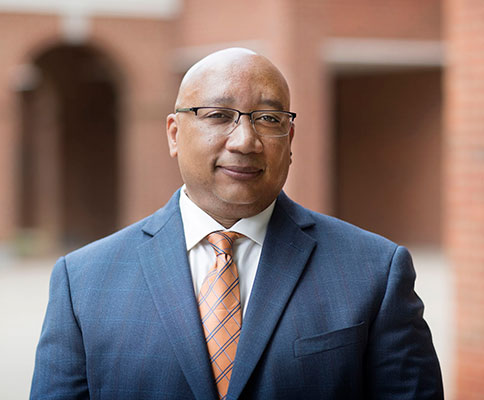
Robert Q. Berry, III |
NAM Cox-Talbot AddressInterest Convergence: An analytical viewpoint for examining how power dictates policies and reforms in mathematics Friday April 8, 2022, 11:10 a.m.-12:00 p.m. This Cox-Talbot talk uses a hybrid policy analysis-critical race theory lens informed largely by legal scholars like Derrick Bell to make the case that policies and reforms in mathematics education failed to address the needs of historically excluded learners. Rather, these policies and reforms are often designed and enacted to protect those in power's economic, technological, and social interests. This talk offers contrasting narratives between policy intentions and policy enactment, highlighting how the language of mathematics policies positions historically excluded learners as deficient within their cultures and communities. Finally, this talk considers features necessary in mathematics policies and reform documents when discussing the historically excluded learners. |
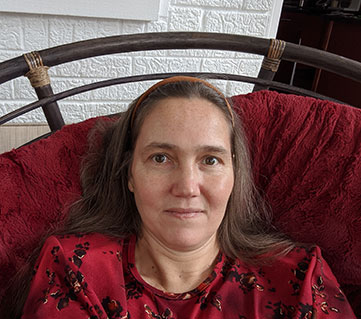
Marianna Csörnyei |
AWM-AMS Noether LectureThe Kakeya needle problem for rectifiable sets Thursday April 7, 2022, 10:05 a.m.-10:55 a.m. A planar set admits the “Kakeya property” if it can be moved continuously to any other position covering arbitrary small area during the movement. It was known for more than 100 years that line segments have this property, but until recently there were only very few other known examples. In the talk we will study two variants of this problem, the geometric and the analytic version. In the classical, geometric version, we find all connected closed sets with the Kakeya property. In the analytic version, where we are allowed to delete a null set at each time moment, we will show that every rectifiable set admits the Kakeya property, moreover, they can be moved to any other position covering not only arbitrary small but zero area. |
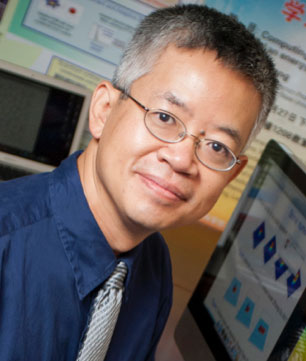
Qiang Du |
SIAM Invited AddressAnalysis and applications of nonlocal models Thursday April 7, 2022, 11:10 a.m.-12:00 p.m. Nonlocality has become increasingly noticeable in nature. The modeling and simulation of its presence and impact motivate new development of mathematical theory. In this lecture, we focus on nonlocal models with a finite horizon of interactions, and illustrate their roles in the understanding of various phenomena involving anomalies, singularities and other effects due to nonlocal interactions. We also present some recent analytical studies concerning nonlocal operators and nonlocal function spaces. The theoretical advances are making nonlocal modeling and simulations more reliable, effective and robust for applications ranging from classical mechanics to traffic flows of autonomous and connected vehicles. |
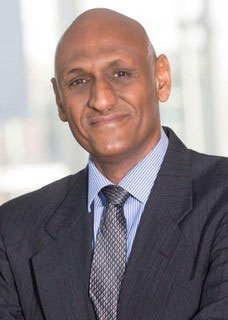
Elamin Elbasha |
Current Events Bulletin Session - Lecture IV
|
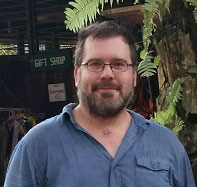
Nicolas Fillion |
POM SIGMAA Guest SpeakerTrust but Verify: What Can We Know About the Reliability of a Computer-Generated Result? Friday April 8, 2022, 5:30 p.m.-6:30 p.m. Since the Second World War, science has become increasingly reliant on the use of computers to perform mathematical work. Today, computers have justifiably become a trusted ally of scientists and mathematicians. At the same time, there is a panoply of cases in which computers generate demonstrably incorrect results; and there is currently no reason to expect that this situation will change. This prompts the careful user to verify computer-generated results, but it is clear that we are often not in a position to review the work of computers as we would traditionally review a putative derivation or calculation. In this sense, computational processes are epistemically opaque. Since Humphreys introduced the phrase `epistemic opacity' in the philosophical literature in 2004, the concept of opacity has been developed along different lines; furthermore, many incompatible claims have been advanced---be they about what opacity is or about whether we should worry about it---leaving this field of the philosophy of computing in a state of confusion. In this paper, we propose a framework that disentangles three core questions (1. What kinds of epistemic opacity are there in scientific computing? 2. Should we worry about epistemic opacity? 3. Should we seek greater transparency whenever possible?) and systematically survey how their answers inter-relate. |
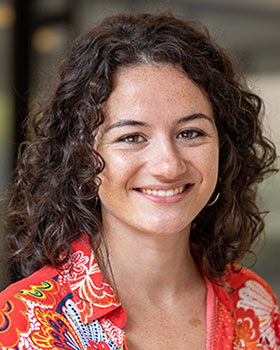
Elena Giorgi |
Current Events Bulletin Session - Lecture IIThe stability of black holes with matter Friday April 8, 2022, 3:00 p.m.-4:00 p.m. Black holes are fundamental objects in our understanding of the universe. The mathematics behind them has surprising geometric properties, and their dynamics is governed by hyperbolic PDEs. A basic question one may ask is whether these solutions to the Einstein equation are stable under small perturbations, which is a typical requirement to be physically meaningful. We will see how the dispersion of gravitational waves plays a key role in the stability problem, illustrating the main conjectures and some recent theorems regarding the evolution of black holes and their interaction with matter fields. |
|
Anna Gilbert |
von Neumann LectureMetric representations: Algorithms and Geometry Saturday April 9, 2022, 9:00 a.m.-9:50 a.m. Given a set of distances amongst points, determining what metric representation is most “consistent” with the input distances or the metric that best captures the relevant geometric features of the data is a key step in many machine learning algorithms. In this talk, we discuss a number of variants of this problem, from convex optimization problems with metric constraints to sparse metric repair. |
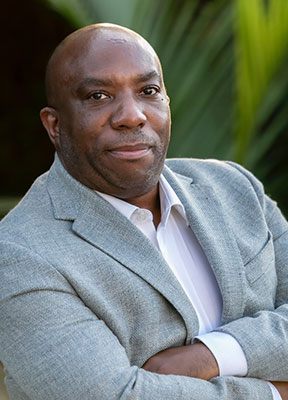
Edray Herber Goins |
MAA Project NExT Lecture on Teaching and LearningAddressing Anti-Black Racism in Our Departments Thursday April 7, 2022, 11:10 a.m.-12:00 p.m. In April 2021, the PBS Newshour ran a story with the headline “Even as colleges pledge to improve, share of engineering graduates who are Black declines”. Indeed, there is a dearth of Black students in our mathematics classrooms. A 2018 study by the Pew Research Center found that Black students earned just 7 percent of STEM bachelor’s degrees. Unfortunately, this is an issue for our faculty as well. A 2017 report in Inside Higher Ed states that there has been an increase over time in the diversity of senior and junior faculty members in the STEM fields — except black faculty. A New York Times article, titled “For a Black Mathematician, What It’s Like to Be the ‘Only One’”, quoted that there are just a dozen black mathematicians among nearly 2,000 tenured faculty members in the nation’s top 50 math departments. What can we as faculty members do to make our mathematics departments more welcoming and diverse for Black students and faculty alike? These are daunting problems, and many with an interest in presenting solutions do not even have tenure! In this interactive presentation, we present some practices that even tenure-track faculty can engage in to showcase how #BlackLivesMatter — from increasing the number of pathways for majors, to building community by conducting research with students, and having hard conversations within hiring committees. |
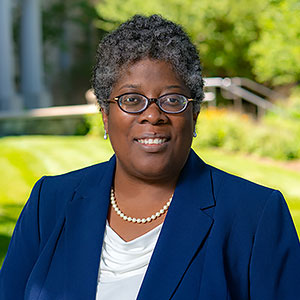
Monica Jackson |
NAM Claytor-Woodard LectureSpatial Data Analysis for Public Health Data Thursday April 7, 2022, 2:40 p.m.-3:30 p.m. Spatial data analysis concerns data that are correlated by location, and relies upon the assumption that objects closer together in space (e.g. geographical location) will most likely have similar responses. This talk provides an overview of graphical and quantitative methods I developed for the analysis of spatial data. Emphasis is on lattice data (also known as areal data or aggregated data) however modeling of geostatistical data and point patterns will be discussed. I will apply these methods to public health data with applications to cancer trends, maternal mortality in the Dominican republic, and COVID-19 disease surveillance. |
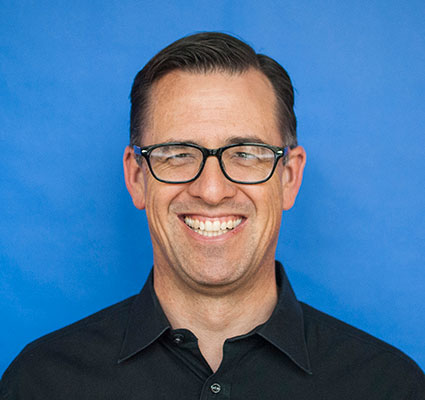
Tyler J. Jarvis |
AMS Lecture on Education
|
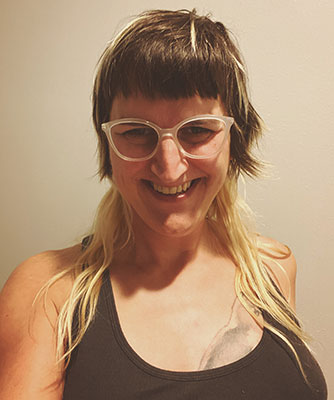
Autumn Kent |
Spectra Lavender LectureFamilies Thursday April 7, 2022, 11:05 a.m.-11:55 a.m. We'll talk about the ubiquity of family in low-dimensional topology and geometry. |
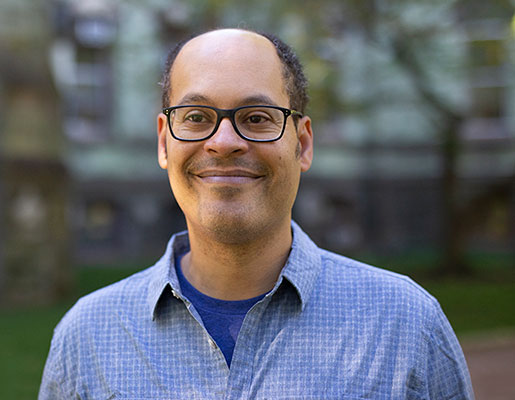
Daniel Reuben Krashen |
AMS Invited AddressField Patching and Algebraic Structures Wednesday April 6, 2022, 10:05 a.m.-10:50 a.m. In this talk we will explore field arithmetic as seen through the lens of algebraic structures such as quadratic forms and division algebras. In particular, I will describe some open problems and how the technique of field patching, first introduced by David Harbater and Julia Hartmann, has given some new tools for progress and insights. |
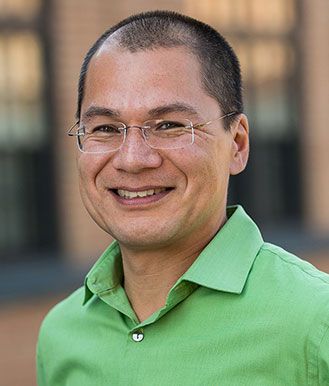
Dave Kung |
MAA-SIAM-AMS Hrabowski-Gates-Tapia-McBay LectureWhy the Math Community Struggles with Equity & Diversity - and Why There’s Reason for Hope Friday April 8, 2022, 9:00 a.m.-9:50 a.m. Numbers don’t lie – we in the mathematical sciences are bad at equity and diversity. Our majors, graduate students, and faculty don’t come close to reflecting our population – especially when it comes to gender, race, ethnicity, and disability status. And our community is far from creating equitable opportunities, despite the good will and extensive efforts of many. While we aren’t the only field that struggles, some deeply-held beliefs, pervasive in the mathematical sciences, hold us back. From thinking that success requires “genius,” to viewing our beloved subject as “pure,” to being blind to structures that hold others back, aspects of our culture must be confronted–and changed–if we are to create a more just community. We must do better. We can do better. And thankfully, there are many people, programs and projects that are pushing us in exactly that direction. |
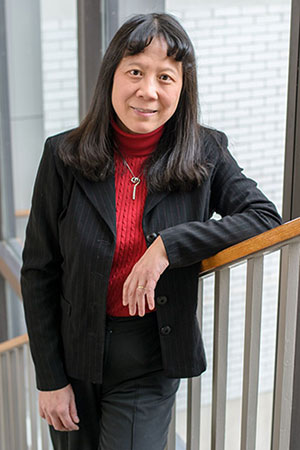
Xihong Lin |
ASA Committee of Presidents of Statistical Societies LectureLearning from COVID-19 Data on Transmission, Health Outcomes, Interventions and Vaccination Thursday April 7, 2022, 3:50 p.m.-4:40 p.m. COVID-19 is an emerging respiratory infectious disease that has become a pandemic. In this talk, I will first provide a historical overview of the epidemic in Wuhan. I will then provide the analysis results of 32,000 lab-confirmed COVID-19 cases in Wuhan to estimate the transmission rates using Poisson Partial Differential Equation based transmission dynamic models. This model is also used to evaluate the effects of different public health interventions on controlling the COVID-19 outbreak. I will next present transmission dynamic regression models for estimating transmission rates in USA and other countries, as well as factors including intervention effects that affect transmission rates. I will discuss estimation of the proportion of undetected cases and the disease prevalence. I will also present the analysis results of >500,000 participants of the HowWeFeel project on health outcomes and behaviors in US, and discuss the factors associated with infection, behavior, and vaccine hesitancy. To help plan safely reopen schools. I will discuss efficient pooled testing design using hypergraph factorization |
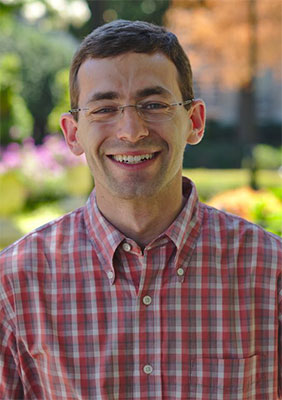
Dan Margalit |
AMS Maryam Mirzakhani LectureMixing surfaces, algebra, and geometry Thursday April 7, 2022, 9:00 a.m.-9:50 a.m. Taffy pullers, lab stirrers, and paint mixers are complicated dynamical systems. To any such system we can ascribe a real number, called the entropy, which describes the amount of mixing being achieved. Which real numbers arise, and what do they say about the dynamics of the system? We will explore this question through the lens of topological surfaces, making unexpected connections to algebra and number theory. Our tour will take us from the work of Max Dehn and Jakob Nielsen a century ago, to the revelations of the Fields medalist William Thurston in the 1970s, to the breakthroughs of Fields medalist Maryam Mirzakhani in the 21st century. |
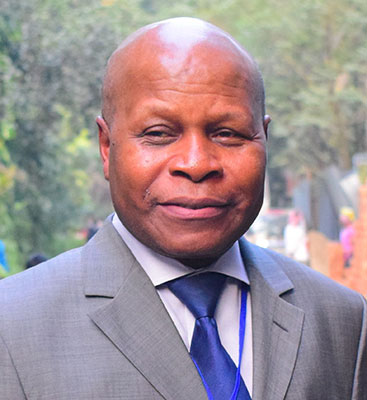
Gaston Mandata N'Guerekata |
AMS Invited AddressAn invitation to periodicity Wednesday April 6, 2022, 2:15 p.m.-3:05 p.m. Periodicity is everywhere, every day. Considering some periodic phenomena, we will revisit the mathematical concept of periodicity and its recent generalizations up to almost automorphy. We will study their applications to some differential equations. An elementary proof of the celebrated Massera Theorem will be presented. We will also show that an almost periodic second order semilinear elliptic equation may not have almost periodic solutions, but many almost automorphic solutions in the envelop of the equation. An application to almost periodically forced pendulum will be given. |
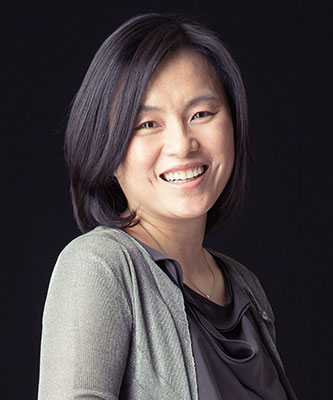
Hee Oh |
AMS Erdős Lecture for StudentsEuclidean lines on hyperbolic manifolds Wednesday April 6, 2022, 11:10 a.m.-12:00 p.m. The classical Kronecker's theorem in 1884 says that the closure of a line on the torus is always a subtorus, depending on the direction of the line. A similar rigidity phenomenon persists for a Euclidean line living in the hyperbolic world, called a horocycle. On closed hyperbolic manifolds, the closure of any Euclidean line is a hyperbolic submanifold, up to translation. This was proved by Ratner (and by Shah independently) more than 30 years ago. What happens if we now venture into hyperbolic worlds of infinite volume? We now need to choose carefully which hyperbolic worlds are safe for rigidity, as not every world is safe. We present an infinite family of hyperbolic manifolds of infinite volume of any given dimension, where every Euclidean line is dense in some translate of a hyperbolic submanifold (based on joint works with McMullen and Mohammadi for dimension three and with Lee for higher dimensions. |
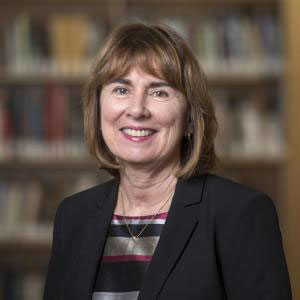
Jill Pipher |
AMS Retiring Presidential AddressRegularity of Solutions to Elliptic Operators and Elliptic Systems Wednesday April 6, 2022, 3:20 p.m.-4:10 p.m. The celebrated De Giorgi-Nash-Moser theory, developed in the middle of the last century, showed that a structural condition on the matrix of coefficients of a second order PDE implied the Holder continuous regularity of its solutions, even for rough (measurable, bounded) coefficients. The structural condition is called ellipticity. This theory had a big impact for the study of non-linear equations and opened the door to a better understanding of how to quantify the connection between regularity (smoothness) of the coefficients and that of solutions. In this talk, we will review progress towards that understanding, and introduce a recently discovered structural condition, generalizing ellipticity, that has sparked new results for complex coefficient operators and real/complex systems. |
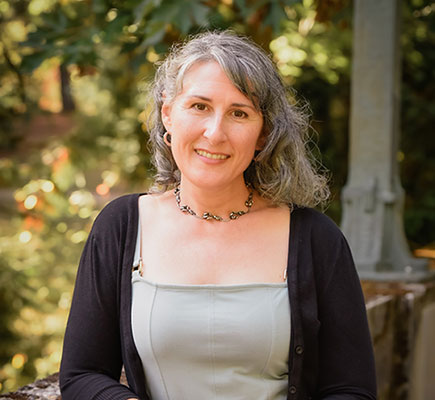
Heather Price |
SIGMAA EM Guest SpeakerClimate Justice Integrated Learning in STEM Thursday April 7, 2022, 7:30 p.m.-8:20 p.m. Our students learn about climate change from the news and in many of our classes, and they are hungry for what to do with that knowledge and how to connect it within their careers and communities. Climate touches and belongs in every subject we teach, from Humanities, business, and health sciences, to all areas of STEM, including mathematics and statistics. Dr. Price will share her work leading the Climate Justice Project at North Seattle College. This initiative seeks to build bridges between disciplines to help faculty incorporate climate justice and civic engagement into their core curriculum, in ways that empower students and encourage student retention and success. In today’s talk Dr. Price will share ideas of how and why to integrate climate justice and civic engagement into STEM, with examples from mathematics courses. |
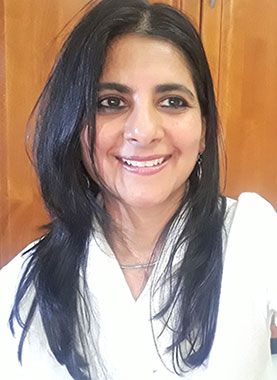
Kavita Ramanan |
AAAS-AMS Invited AddressInteracting Stochastic Processes on Random Graphs Friday April 8, 2022, 11:10 a.m.-12:00 p.m. Large collections of stochastic processes in which the infinitesimal evolution of each process depends on the states of neighboring processes with respect to an underlying (possibly random) interaction graph arise as models in a wide variety of applications in statistical physics, epidemiology, neuroscience, engineering and operations research. Such processes exhibit a range of interesting behavior, but are typically too complex and high-dimensional to be amenable to exact analysis or efficient simulation. In this talk, I will survey rigorous limit theorems that characterize the asymptotic behavior of such interacting stochastic processes and provide insight into the effect of the topology of the underlying interaction graph on the stochastic dynamics. In particular, after describing classical “mean-field” limits that may be characterized by nonlinear ordinary or partial differential equations, I will describe recent developments that provide novel characterizations of dynamics on sparse random graphs. |
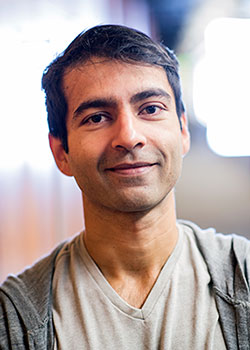
Anup Rao |
Current Events Bulletin Session - Lecture IIISunflowers: from soil to oil Friday April 8, 2022, 4:00 p.m.-5:00 p.m. A sunflower is a collection of sets whose pairwise intersections are all the same. Erdos and Rado showed that any large family of sets of size k must contain a large sunflower, and made a conjecture about the dependence of the size of sunflower on the size of the family of sets. Very recently, Alweiss, Lovett, Wu and Zhang made significant progress towards proving their conjecture. I discuss the key ideas involved in this line of work, and show how this problem is connected to a diverse array of applications in mathematics and computer science. |
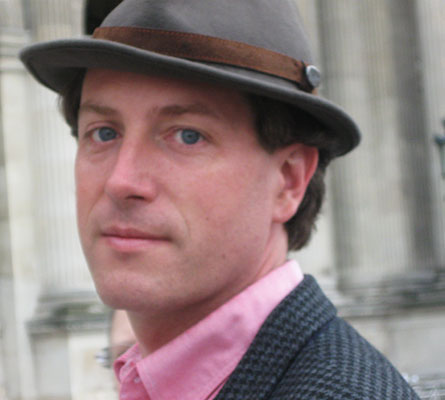
Tom Scanlon |
Current Events Bulletin Session - Lecture ITame Geometry for Hodge theory Friday April 8, 2022, 2:00 p.m.-3:00 p.m. Hodge theory brings the methods of complex analysis and differential geometry to algebraic geometry. As such, highly transcendental constructions, such as those of period mappings produced through integration, are used to study problems of an algebraic nature. Some fundamental conjectures in the subject, most notably the Hodge Conjecture itself, predict that certain objects defined using these transcendental methods are in fact algebraic. In 1994, Cattani, Deligne, and Kaplan proved one of the strongest theorems in this vein on the algebraicity of the so-called Hodge locus. In a paper published in 2020, Bakker, Klingler, and Tsimerman gave a simplified proof of the Cattani-Deligne-Kaplan theorem by showing that the period mappings appearing in that theorem are definable in an o-minimal structure. Here, “definable” carries its precise meaning in the sense of first-order logic and o-minimality is a technical, tameness condition on structures (again in the sense of first-order logic) on the real numbers. The Bakker-Klingler-Tsimerman theorem and a string of subsequent results tying o-minimal to Hodge theory exhibit once more that o-minimality may serve as tame geometry. In this lecture, I will discuss o-minimality in concrete terms, recall some of the basics of Hodge theory, state the Bakker-Klingler-Tsimerman theorem in a simplified form, and explain the relevance of o-minimality to this theorem and its generalizations. |
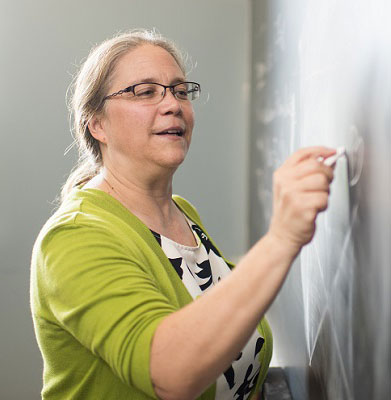
Karen E. Smith |
AMS Colloquium LecturesUnderstanding and Measuring Singularities in Algebraic Geometry In these three talks, I hope to share some of the beauty of an ancient field of mathematics called Algebraic Geometry, and some of the excitement of modern techniques used to investigate it. The talks do build on each other, but each can stand alone as well. Algebraic geometry is the study of algebraic varieties, or geometric shapes described by polynomial equations. You already know many examples, such as the circle, whose polynomial equation is $x^2 + y^2 = 1$; or a sphere. Algebraic varieties are ubiquitous throughout mathematics and its applications to science and engineering. Not only do they naturally arise in important contexts---the set of all rigid transformations of space, for example, can be given the structure of an algebraic variety---but often complicated behavior can be described (or approximated) by polynomials. Because polynomials are relatively easy to manipulate by hand or by machine, algebraic geometry is a tool for scientists, engineers and even artists, as well as a rich source of examples throughout mathematics. Of course, algebraic geometry is also beautiful theoretical subject in its own right, and it is from this perspective that the talks approach the subject. AMS Colloquium Lecture IResolutions of Singularities and Rational Singularities Wednesday April 6, 2022, 1:00 p.m.-1:50 p.m. While conic sections and spheres are smooth varieties, in general, a variety can have singular points---places where it is pinched or intersects itself. In the first talk, we discuss Hironaka's famous theorem on resolution of Singularities---a technique to “get rid" of the singular points. We introduce a class of singular varieties called rational singularities that are important because they are well-approximated by their resolutions. While it can be difficult to prove a given variety has rational singularities, we explain a remarkably checkable way to characterize rational singularities using “reduction modulo p". AMS Colloquium Lecture IIMeasuring Singularities Thursday April 7, 2022, 1:00 p.m.-1:50 p.m. In the second lecture, we discuss ways to quantify “how singular" a particular singular point on a particular variety might be. For complex varieties, we define a numerical measure of the singularity (called the log canonical threshold) analytically---in terms of the integrability of a natural real-valued function in a neighborhood of the singular point. For varieties defined over a field of characteristic $p$, however, a completely different approach is needed: here, we show how to iterate the $p$-th power (or Frobenius) map to produce a numerical measure of singularities called the $F$-pure threshold, which has beautiful fractal-like properties. Remarkably, these two approaches turn out to be closely related: for a point on a complex variety $X$, we explain how to “reduce modulo p" to get a point on a variety $X_p$ over a field of prime characteristic $p$. Amazingly, as we let $p$ approach infinity, the limit of the F-pure thresholds in characteristic $p$ approaches the log canonical threshold of the original singular point on $X$. AMS Colloquium Lecture IIIExtremal Singularities Friday April 8, 2022, 1:00 p.m.-1:50 p.m. It is natural to inquire what might be the most singular singularity of all. Is there a point on a variety which is “more singular"---measured using our invariants from the second lecture---than any other point on any other variety? This seemingly naive question has an interesting answer in prime characteristic: for homogeneous hypersurfaces---meaning (affine) varieties defined by a single homogeneous polynomial---we discuss a sharp lower bound on the F-pure threshold in terms of the degree. We can argue that the hypersurfaces achieving this smallest possible F-pure threshold are the most singular ones among all degree d hypersurfaces. Indeed, we can completely classify these maximally singular hypersurfaces, and prove that they have remarkable algebraic and geometric properties. For example, among the homogeneous equations of smooth projective surfaces, those with minimal F-pure threshold define surfaces containing a radical abundance of lines (approximately $d^4$ where $d$ is the degree of the surface---an impossibility for complex surfaces), and moreover, these lines never intersect in a triangle. This connects extremal singularities to several disparate areas, including finite geometries, rational points on varieties, algebraic coding theory, and more. |

Eitan Tadmor |
AMS Josiah Willard Gibbs LectureEmergent Behavior in Collective Dynamics Thursday April 7, 2022, 5:00 p.m.-6:00 p.m. A fascinating aspect of collective dynamics is self-organization, where small scale interactions lead to the emergence of high-order structures with larger-scale patterns. It is a characteristic feature in collective dynamics of “social particles” which actively probe the environment and aggregate into various forms of clusters. In different contexts these take the form of flocks, swarms, consensus, synchronized states etc. In this talk I will survey recent mathematical developments in collective dynamics, starting with the influential works of Reynolds, Krause, Vicsek and Cucker & Smale. The dynamics is governed by different protocols of pairwise interactions, quantified in terms of proper communication kernels. Collisions are avoided. A main question of interest is how different classes of such kernels affect the large-time large-crowd dynamics. We will ask how short-range interactions can affect the emergence of large-scale patterns, what is the role of repulsion away thermal equilibrium, and how graph connectivity dictates the emergent behavior of multi-species dynamics. |
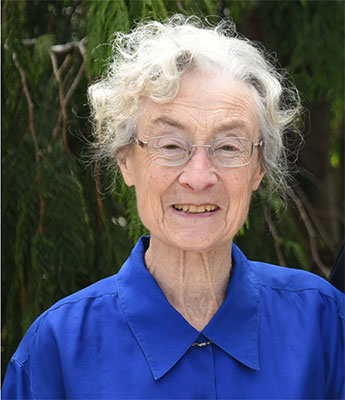
Pauline van den Driessche |
ILAS Invited AddressSign Patterns Meet Dynamical Systems Wednesday April 6, 2022, 9:00 a.m.-9:50 a.m. Biological systems, including those for predator-prey and disease transmission models, often give rise to systems of first order ordinary differential equations (ODEs). Linearization then yields a system $\dot x= Ax$ where $A$ is the community matrix. By contrast, mechanical and electrical systems often give rise to a second order ODE system $\"{x}= A\dot{x}+ Bx$, which is equivalent to a first order system with coefficient matrix $C =\begin{bmatrix}A&B\\I&0\end{bmatrix}$. In cases for which the signs rather than the magnitudes of matrix entries are known, the matrices become sign patterns with entries $\in\{+,-,0\}$. What can be determined about the behavior of a dynamical system governed by such a sign pattern matrix? This general question is addressed by developing results on sign patterns. Some answers in special cases are given that determine stability and inertia properties, which are important for the underlying dynamical systems. Joint work with Adam H. Berliner, Minerva Catral, D.D. Olesky. |
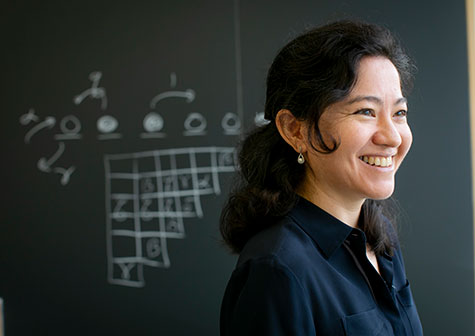
Lauren K. Williams |
MAA-AMS-SIAM Gerald and Judith Porter Public LectureTropical geometry and shallow water waves Saturday April 9, 2022, 3:00 p.m.-4:00 p.m. The field of (algebraic) geometry studies geometric objects associated to polynomials; for example, a parabola is associated to the polynomial $y-x^2$. Tropical geometry is a new field which studies geometric objects associated to "tropical" polynomials, in which the operations of multiplication and addition are replaced by addition and the minimum operation. Surprisingly, tropical geometry arises in some real life applications. In particular, I will explain how tropical curves can be used to model shallow water waves, such as waves at the beach. |
- JMM Home
- Access to Virtual Platform
- General Instructions
- Policies and Statements
- General
- Broadcasting and Photographing
- MathSafe
- Scientific Program
- Virtual Program
- Index of Programs by Organization
- Invited Speakers - A Closer Look
- Timetable
- Child Care
- Child Care Grants
- Exhibits
- Exhibitor Spotlights
- Mathematical Art Exhibition
- Additional Exhibitor Events and Activities
- Prizes and Awards
- Prizes and Awards
- Professional Development
- AMS Short Course
- Dept Chairs Workshop
- PEPs
- Registration
- How to Register
- Registration Fees
- Frequently Asked Questions
- General
-
- Social Networking
